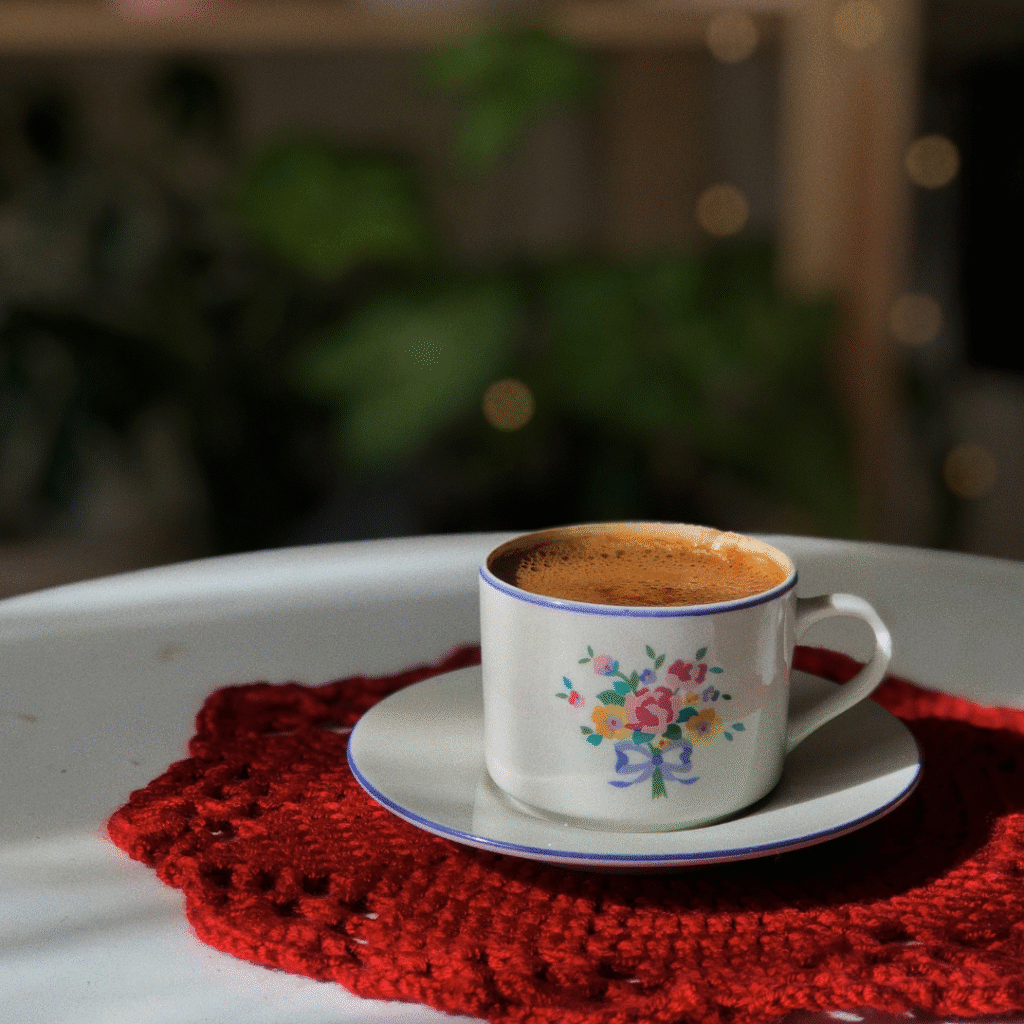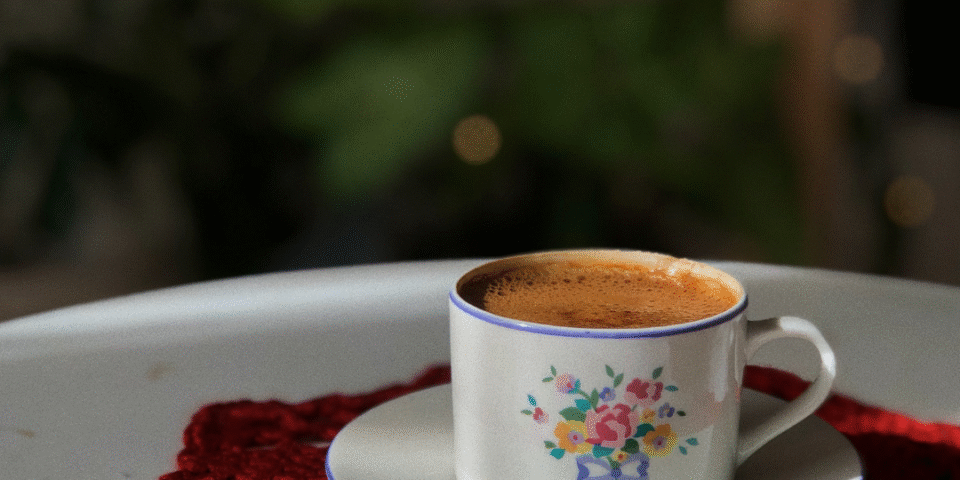Crochet coaster is more than just a decorative item—it’s a symbol of slow living, sustainability, and the enduring charm of handmade craft. As a professional crochet artist and blogger, I’ve spent years exploring the subtle beauty of small, functional pieces that elevate everyday rituals. Among them, the humble crochet coaster stands out as a perfect blend of utility and artistry. Whether you’re protecting your wooden table from a steaming mug or adding a touch of texture to your kitchen decor, crochet coasters offer a natural, eco-conscious alternative to mass-produced accessories.
In this article, I’ll walk you through the history, materials, techniques, and cultural relevance of crochet coasters, while sharing insights from my own studio and research. If you’ve ever considered making or purchasing one, this guide will help you understand why crochet coaster deserves a place in every home.
The origins and evolution of the crochet coaster
The crochet coaster has its roots in traditional textile arts, dating back to the 19th century when crochet became popular across Europe and North America. Originally used to create lace and decorative trims, crochet quickly evolved into a practical craft. Coasters emerged as one of the earliest domestic applications—small, quick to make, and endlessly customizable.
Historically, crochet coasters were made from leftover yarn, linen thread, or cotton, often using intricate lace patterns. They served both functional and aesthetic purposes, protecting surfaces from moisture while showcasing the maker’s skill. In Victorian households, crochet coasters were part of the tea ritual, laid out with pride alongside porcelain cups and silver spoons.
Today, the crochet coaster continues to evolve, embracing modern design sensibilities while staying true to its handmade heritage.
Why choose a crochet coaster over synthetic alternatives?
There are several compelling reasons to choose a crochet coaster, especially if you value natural materials and ethical production:
- Sustainability: Crochet coasters made from organic cotton, bamboo, or linen are biodegradable and free from harmful chemicals.
- Durability: Unlike synthetic coasters that warp or peel, crochet coasters maintain their shape and texture over time.
- Customizability: You can tailor the size, color, and pattern to match your home’s aesthetic.
- Zero waste: Many makers use leftover yarn or repurposed fibers, reducing textile waste.
- Tactile beauty: The texture of a crochet coaster adds warmth and character to any surface.
In my own practice, I’ve found that crochet coasters resonate deeply with clients who seek meaningful, sustainable alternatives to disposable home goods.
Materials that matter: natural fibers for crochet coasters
The choice of yarn is crucial when crafting a crochet coaster. Natural fibers not only enhance the look and feel but also align with eco-conscious values. Here are some of my preferred materials:
- Organic cotton: Soft, absorbent, and easy to wash. Ideal for everyday use.
- Linen: Strong and naturally antibacterial. Perfect for minimalist designs.
- Hemp: Durable and rustic, with a unique texture.
- Bamboo: Silky and sustainable, though best used in blends for structure.
- Recycled yarns: A great option for reducing waste and adding character.
Each fiber brings its own personality to the crochet coaster, allowing makers to experiment with texture, color, and form.

Techniques and patterns: from beginner to advanced
Crochet coasters are a fantastic project for all skill levels. Beginners can start with simple rounds or squares using single crochet or half-double crochet stitches. More advanced makers might explore:
- Mandala-style coasters: Featuring layered rounds and color changes.
- Lace motifs: Using fine thread and intricate stitch combinations.
- Tunisian crochet: For a dense, woven look.
- Textured stitches: Like bobbles, popcorns, or cables for added dimension.
One of the joys of making crochet coasters is the freedom to experiment. A single coaster takes little time and yarn, making it ideal for testing new techniques or showcasing a favorite fiber.
If you’re looking for inspiration or ready-to-use instructions, I invite you to explore my free pattern collection at Velvet North. You’ll find a variety of coaster designs that reflect natural aesthetics and thoughtful craftsmanship.
Cultural relevance and gifting traditions
Crochet coasters have long been part of gifting traditions. In many cultures, handmade items are considered more meaningful than store-bought goods. A set of crochet coasters can be a heartfelt housewarming gift, a wedding favor, or a seasonal token of appreciation.
In Japan, for example, the concept of “zakka” celebrates everyday items that bring joy and beauty. Crochet coasters fit perfectly into this philosophy—simple, functional, and infused with personal touch.
In Scandinavian homes, where hygge and coziness are central, crochet coasters often accompany warm drinks and candlelight, enhancing the sense of comfort and connection.
Selling and sourcing: the artisan economy
The rise of handmade marketplaces has created new opportunities for crochet artists. Platforms like Etsy, local craft fairs, and boutique shops now feature crochet coasters as part of curated home collections. Consumers are increasingly drawn to items that tell a story—who made them, how they were made, and what materials were used.
As a maker, I’ve found that crochet coasters are among the most requested items in my shop. Their affordability, versatility, and eco-friendly appeal make them ideal for conscious consumers.
If you’re considering purchasing a crochet coaster, look for sellers who disclose their materials and process. Transparency is key to supporting ethical production.
Care and maintenance: keeping your crochet coaster fresh
One of the advantages of using natural fibers is ease of care. Most crochet coasters can be gently hand-washed or machine-washed in a mesh bag. Here are a few tips:
- Use mild detergent: Avoid harsh chemicals that can damage fibers.
- Air dry: Lay flat to maintain shape and prevent shrinkage.
- Spot clean: For minor spills, blot with a damp cloth and let dry.
With proper care, a crochet coaster can last for years, becoming a cherished part of your daily rituals.
A natural choice for mindful living
Crochet coaster is more than a craft—it’s a lifestyle choice. In a world dominated by mass production, choosing handmade, natural items is a quiet act of resistance. It’s about slowing down, appreciating texture, and connecting with the materials that surround us.
Whether you make them yourself or support an artisan, crochet coasters bring warmth, intention, and beauty to your home. They remind us that even the smallest items can carry meaning, and that sustainability begins with everyday choices.
Here’s a simple crochet coaster pattern that pairs perfectly with the tone and theme of your article — minimal, natural, and beginner-friendly:
Simple Crochet Coaster Pattern
Skill level: Beginner
Time: ~20–30 minutes per coaster
Size: Approx. 4 in (10 cm) diameter
Materials
- Yarn: 100% cotton yarn (DK or worsted weight)
- Hook: 4.0 mm (G/6) or size suitable for your yarn
- Tapestry needle (for weaving in ends)
- Scissors
Abbreviations (US terms)
- ch – chain
- sl st – slip stitch
- sc – single crochet
- hdc – half double crochet
- dc – double crochet
- st – stitch
Instructions
Round 1:
Make a magic ring.
Ch 2 (counts as first hdc), then make 11 hdc into the ring.
Join with sl st to top of first hdc. (12 sts)
Round 2:
Ch 2, make 2 hdc in each st around.
Join with sl st to first hdc. (24 sts)
Round 3:
Ch 2, 1 hdc in next st, 2 hdc in next st — repeat around.
Join with sl st. (36 sts)
Round 4:
Ch 1, 1 sc in each st around.
Join with sl st, fasten off, and weave in ends.
Optional border
For a decorative edge, after Round 4:
[Ch 2, skip next st, sl st in next st] – repeat around for a gentle scalloped edge.
Notes
- To make your coaster larger, add one or two more rounds, increasing evenly as before.
- Block your coaster lightly with steam or water to flatten it and give it a professional finish.
- For a rustic set, try mixing natural tones — ecru, linen, and clay.
Would you like me to make a second pattern version (for example, square or textured bobble-style coaster) so you can include both in your blog post for variety?

